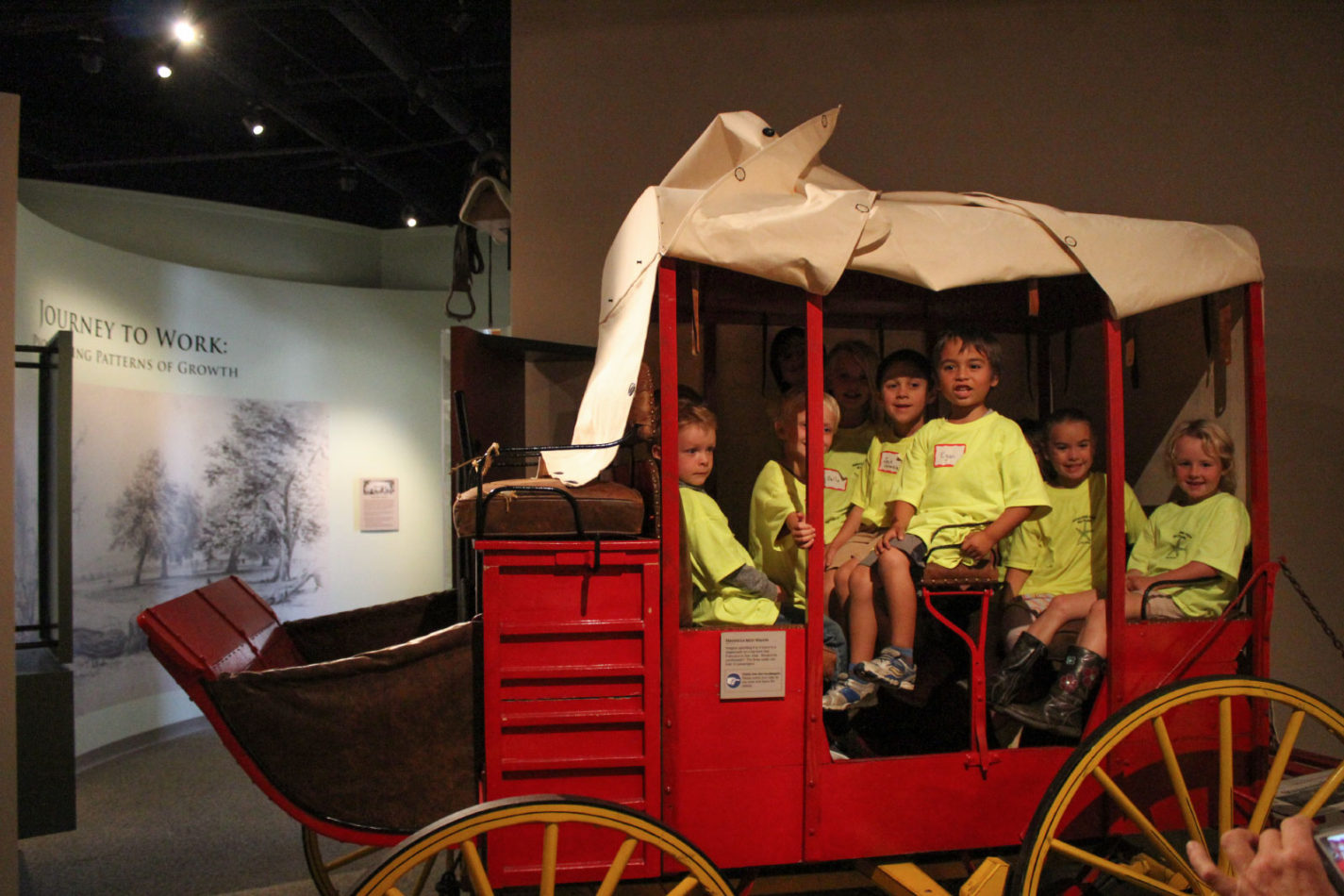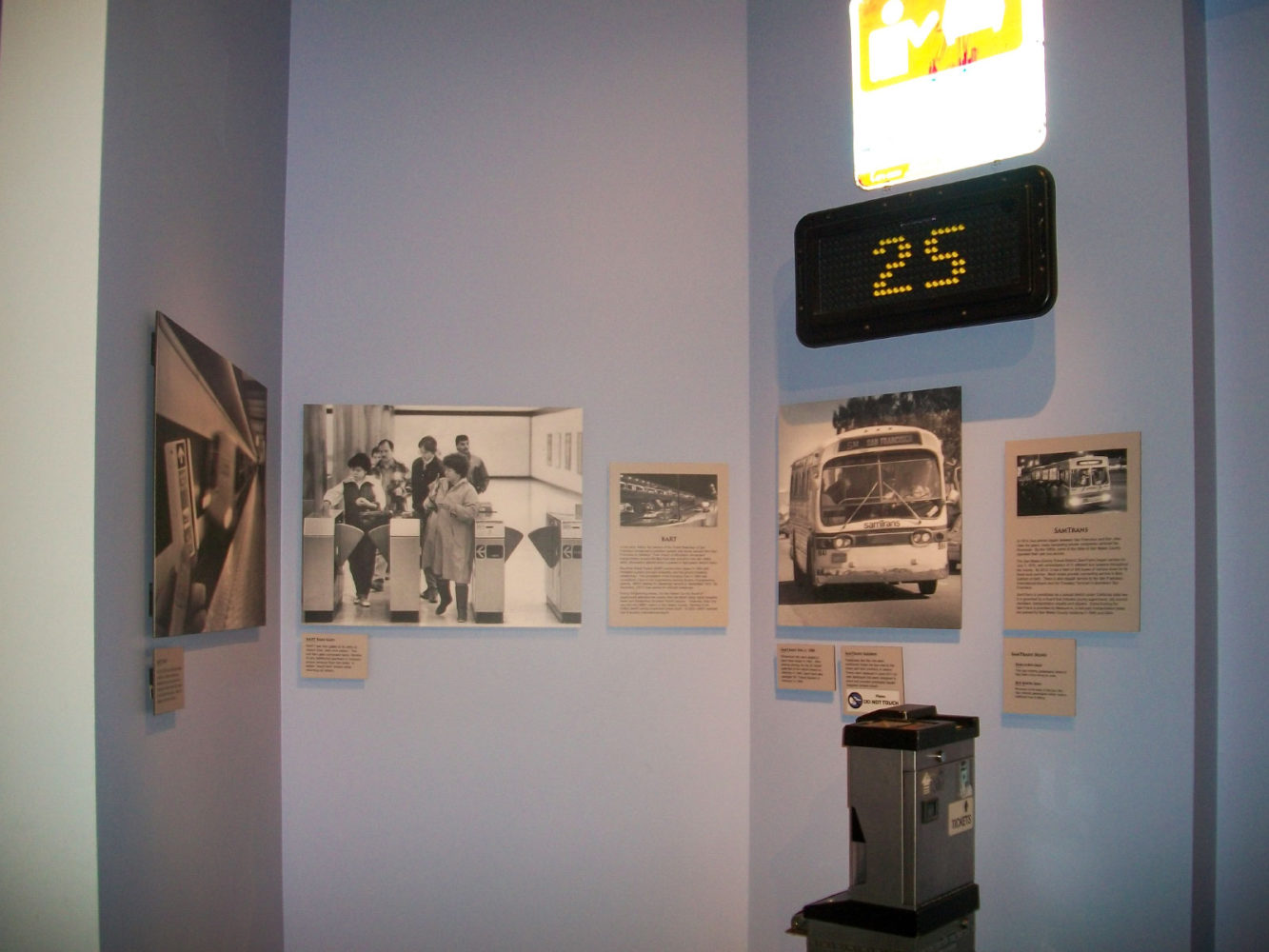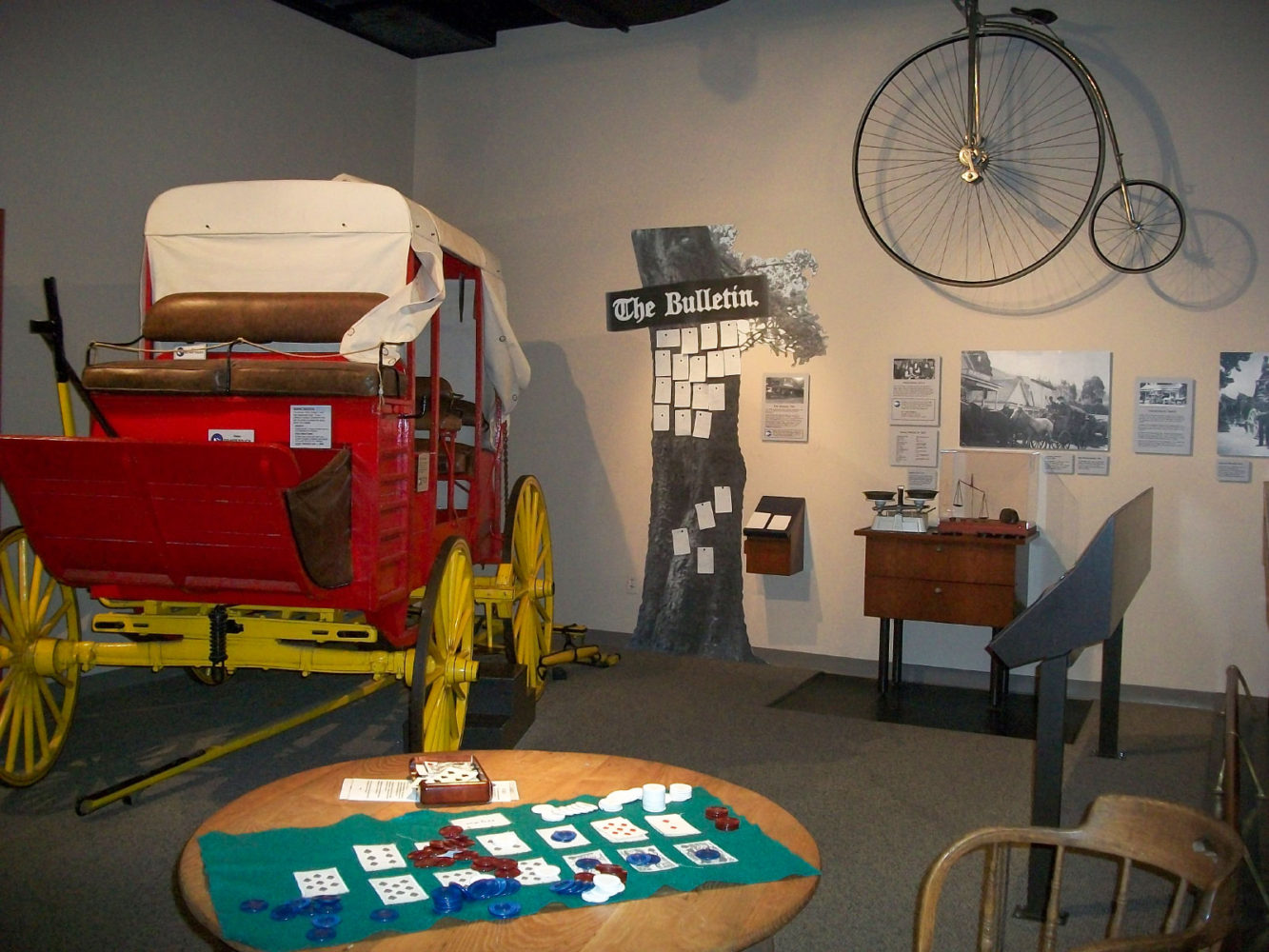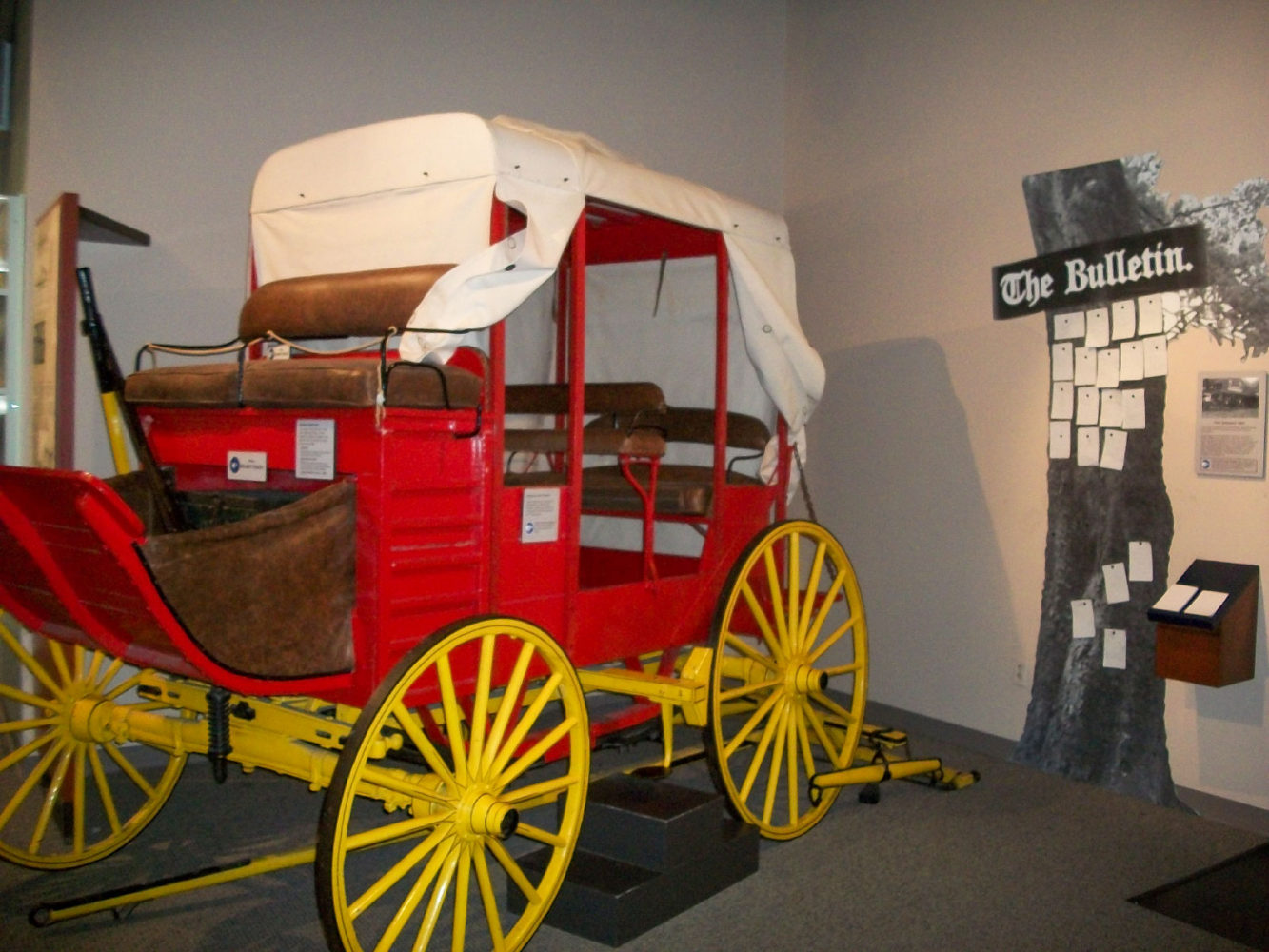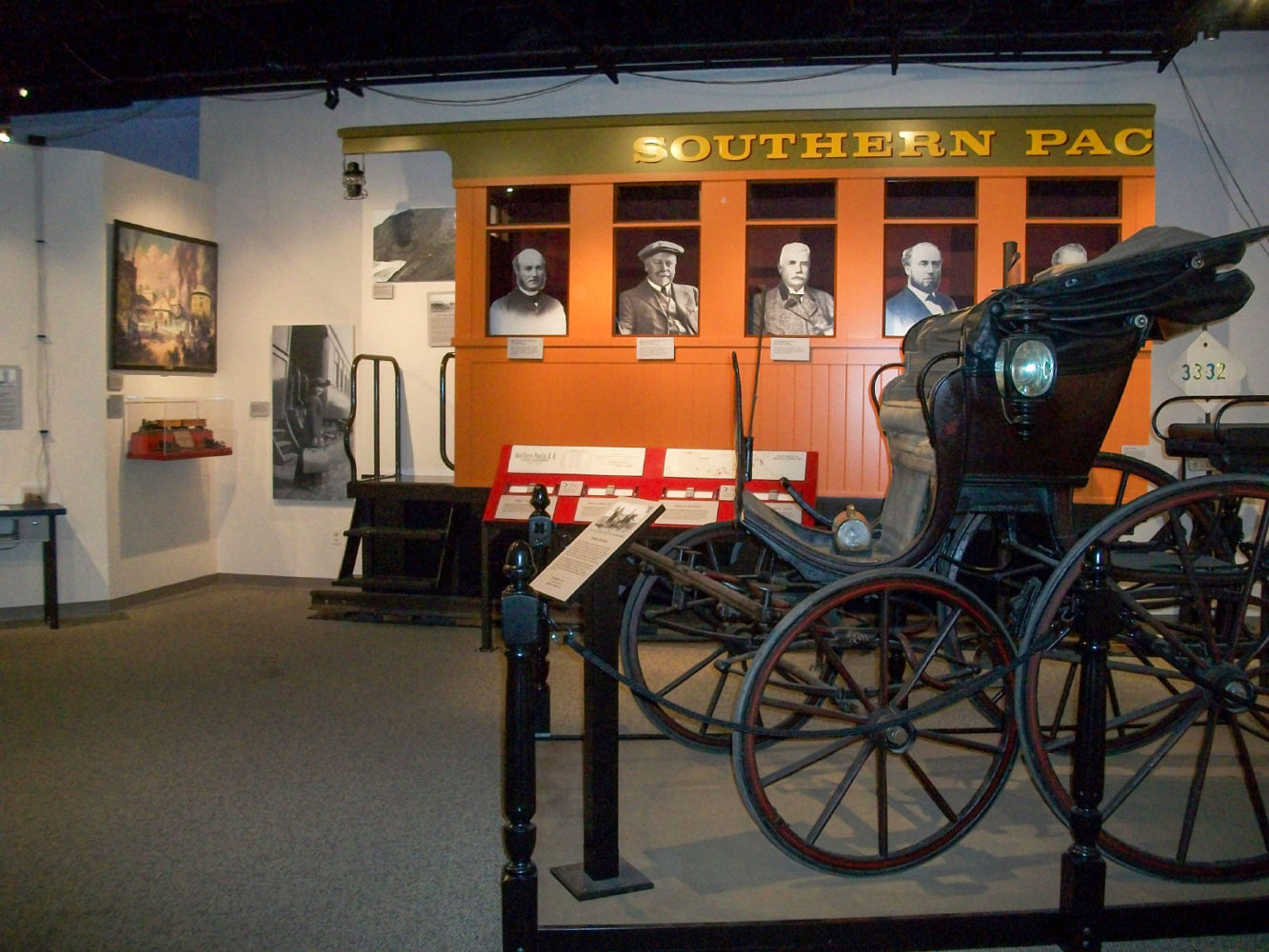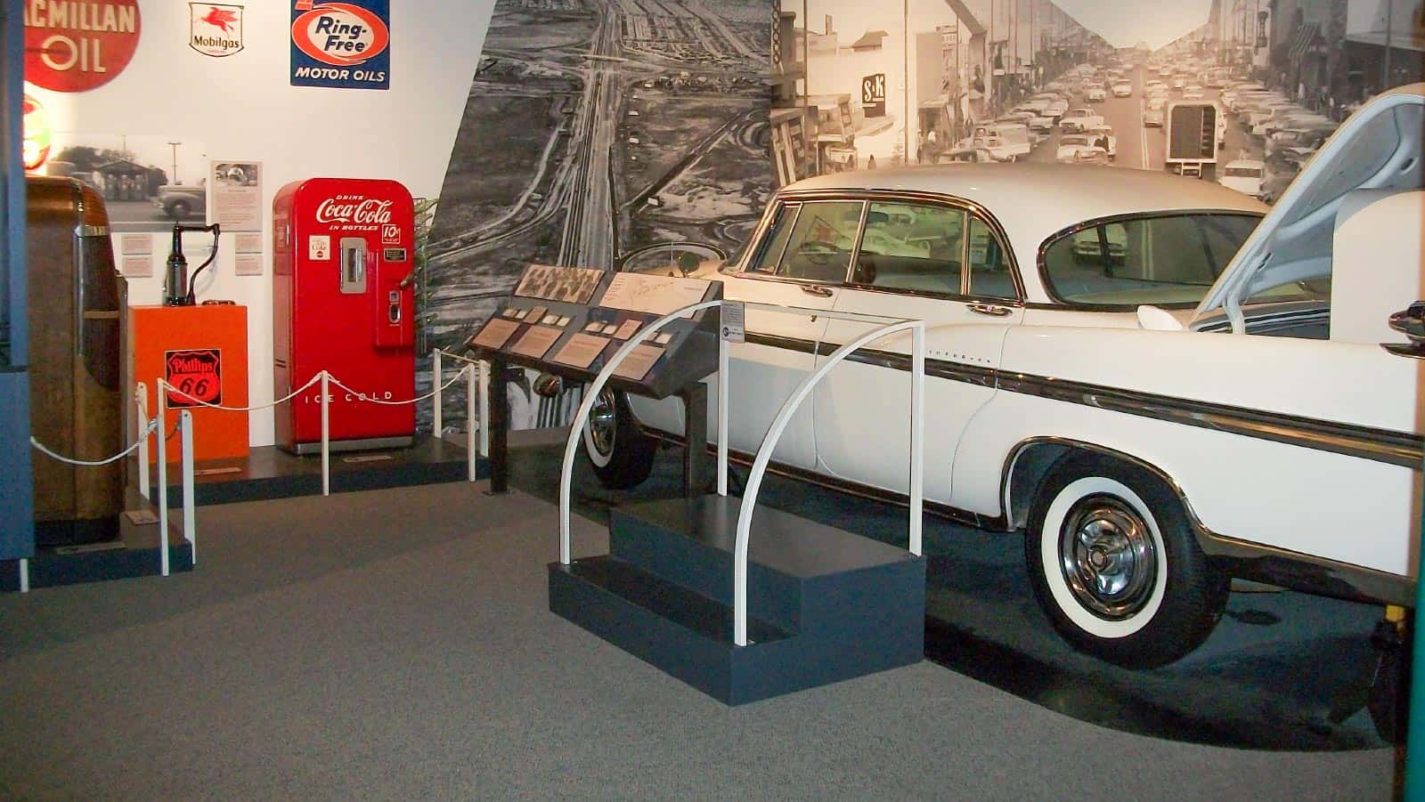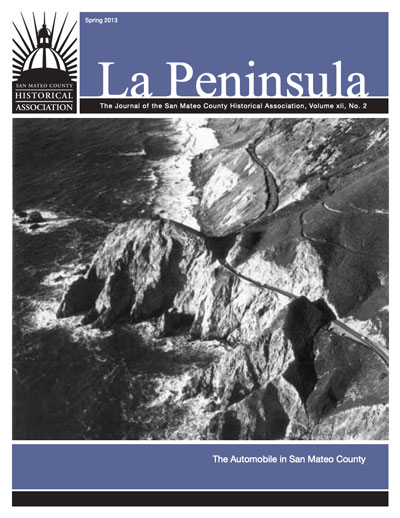Pioneering Patterns of Growth
Exhibits
Journey to Work
Changes in transportation helped San Mateo County develop as a premiere suburban area of the West.
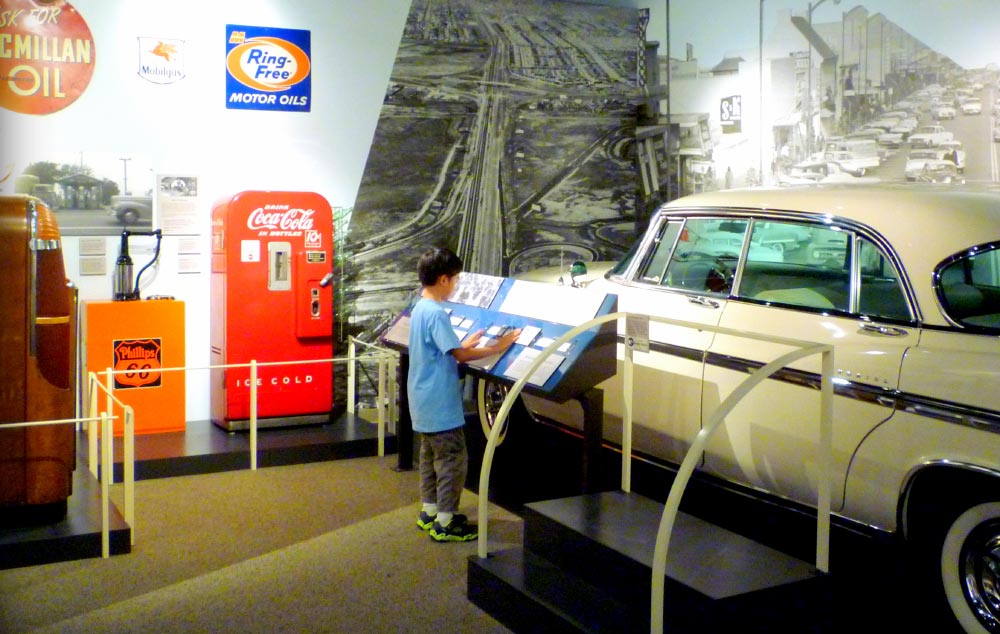
T ransportation shaped the development of the Peninsula. Early development started around the stage stops of the stage lines and the train stations near the large estates of the railroad commuters. In the 1900s, suburban growth occurred near streetcar stops and along new roads built for automobiles. Local transportation made San Mateo County into one of the premier suburban areas of the West coast.
Explore the Exhibit
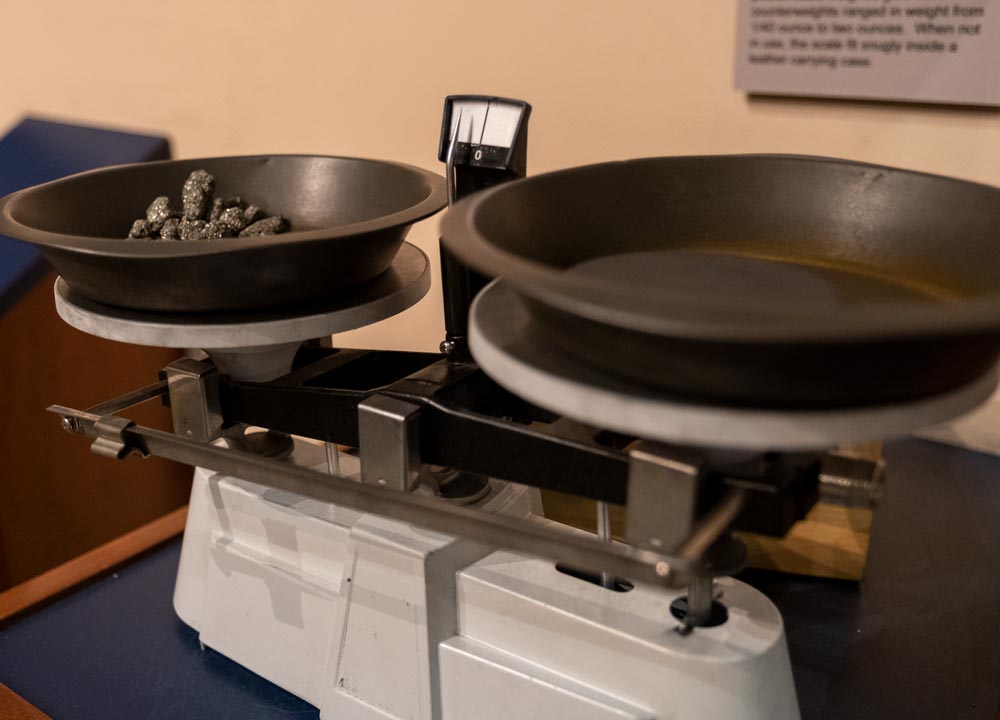
Stagecoach Lays the Foundation
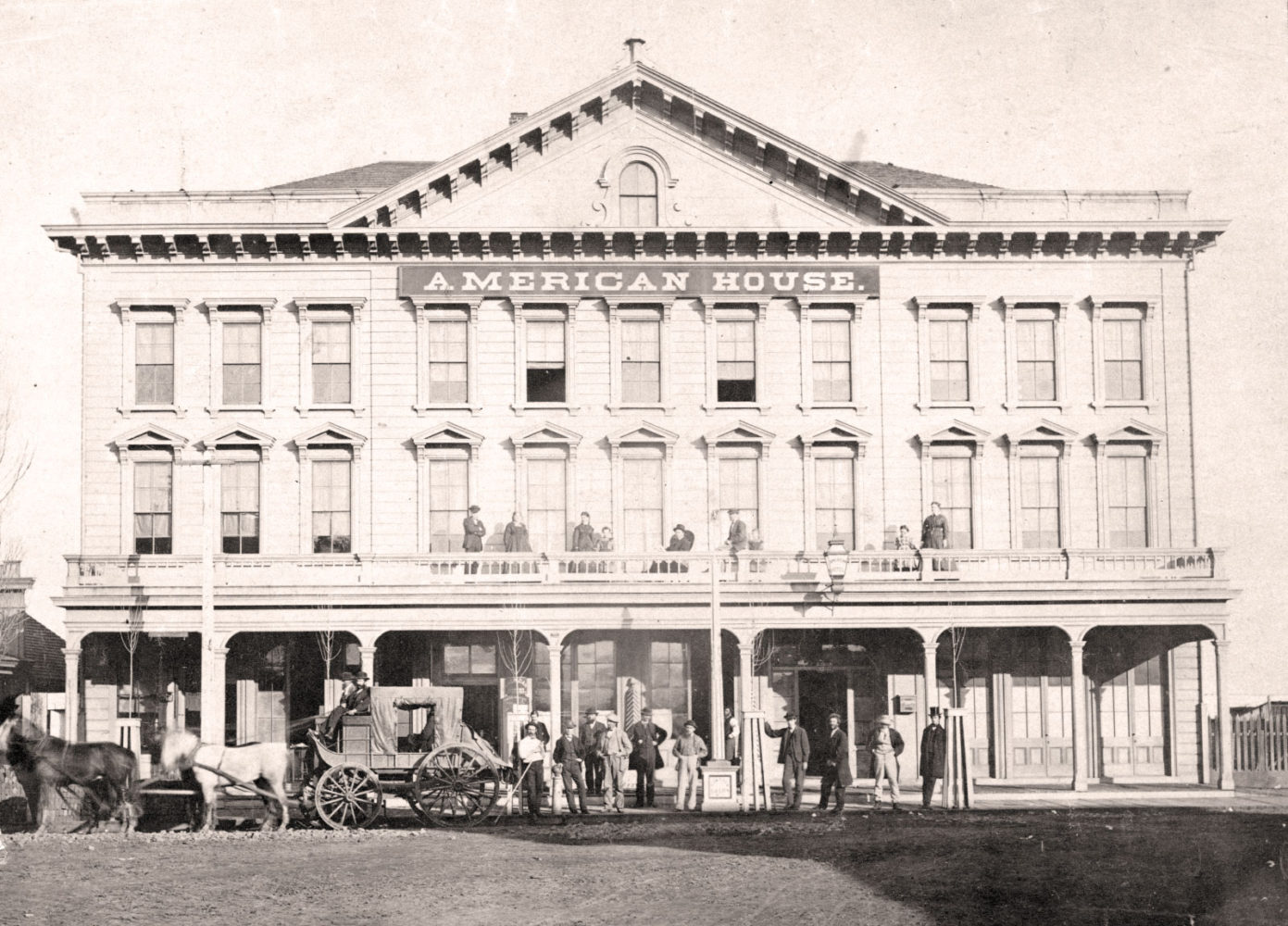
The American House in Redwood City was a stage stop.
After the discovery of gold in 1848, stage lines were organized to connect San Francisco with other emerging cities. Long, difficult journeys prevented people from daily commuting by stagecoach. However, stagecoach lines and mile houses provided the foundation for future development.
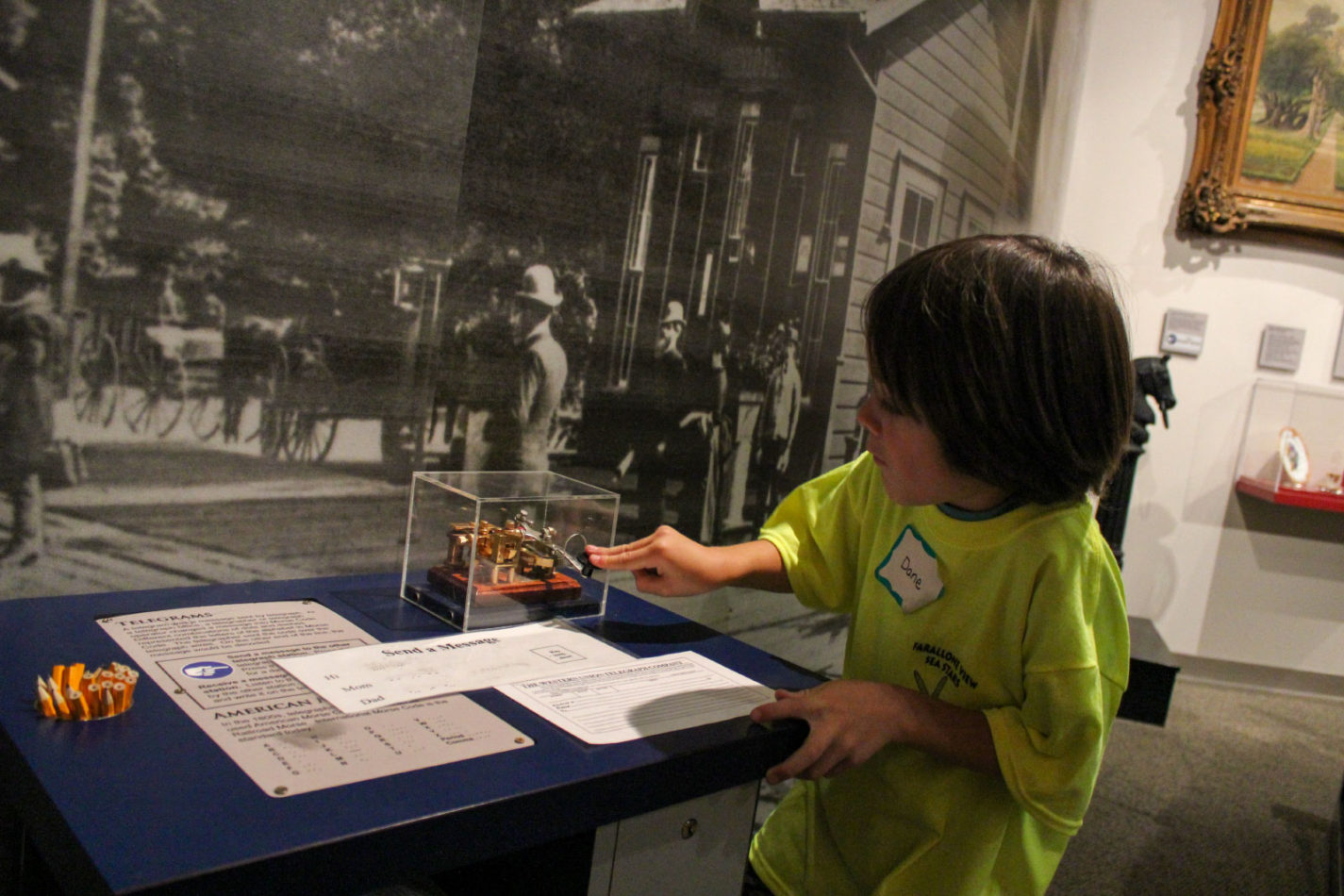
Railroad for First Commuters
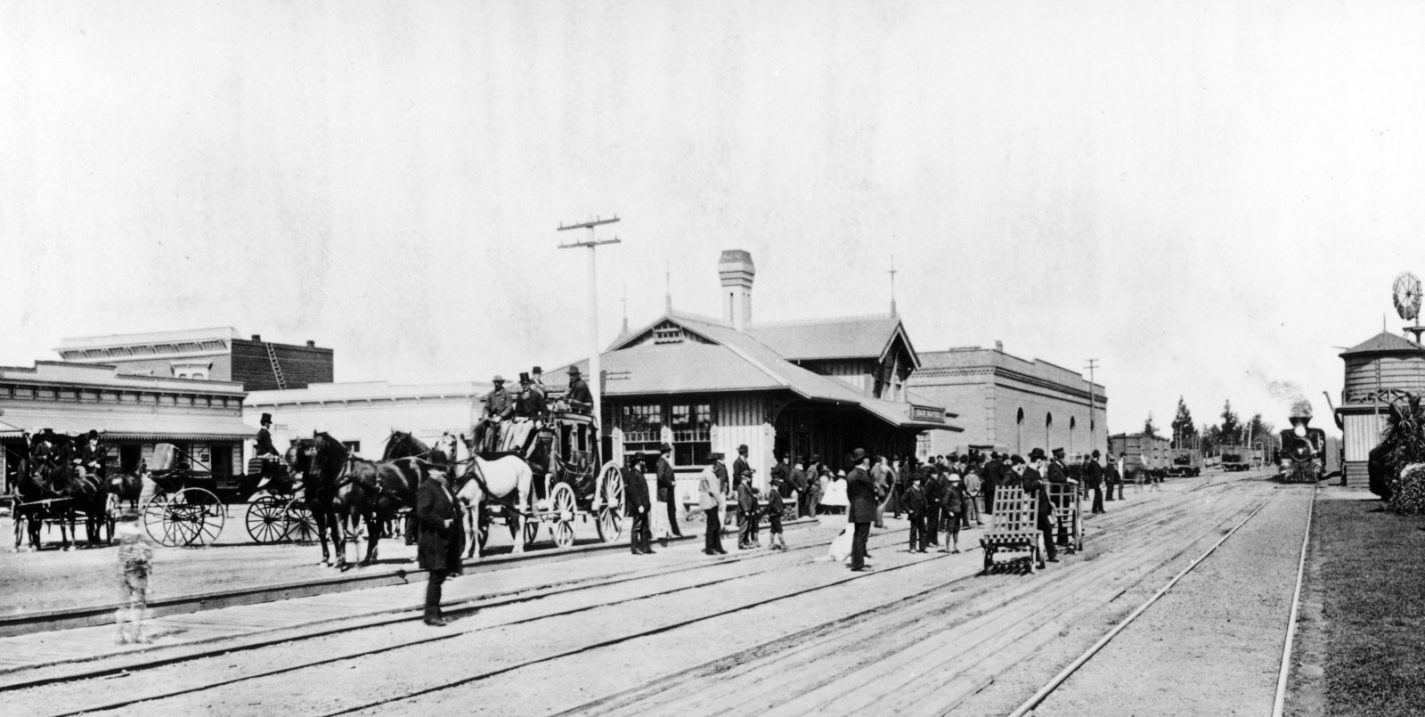
People wait for the train in San Mateo.
The completion of the San Francisco to San Jose Rail Road in 1864 created a commuter culture in San Mateo County. By train, the trip from San Francisco to San Jose took less than 2 1/2 hours. Due to the cost of the trip, only the elite could work in the City and live on the Peninsula.
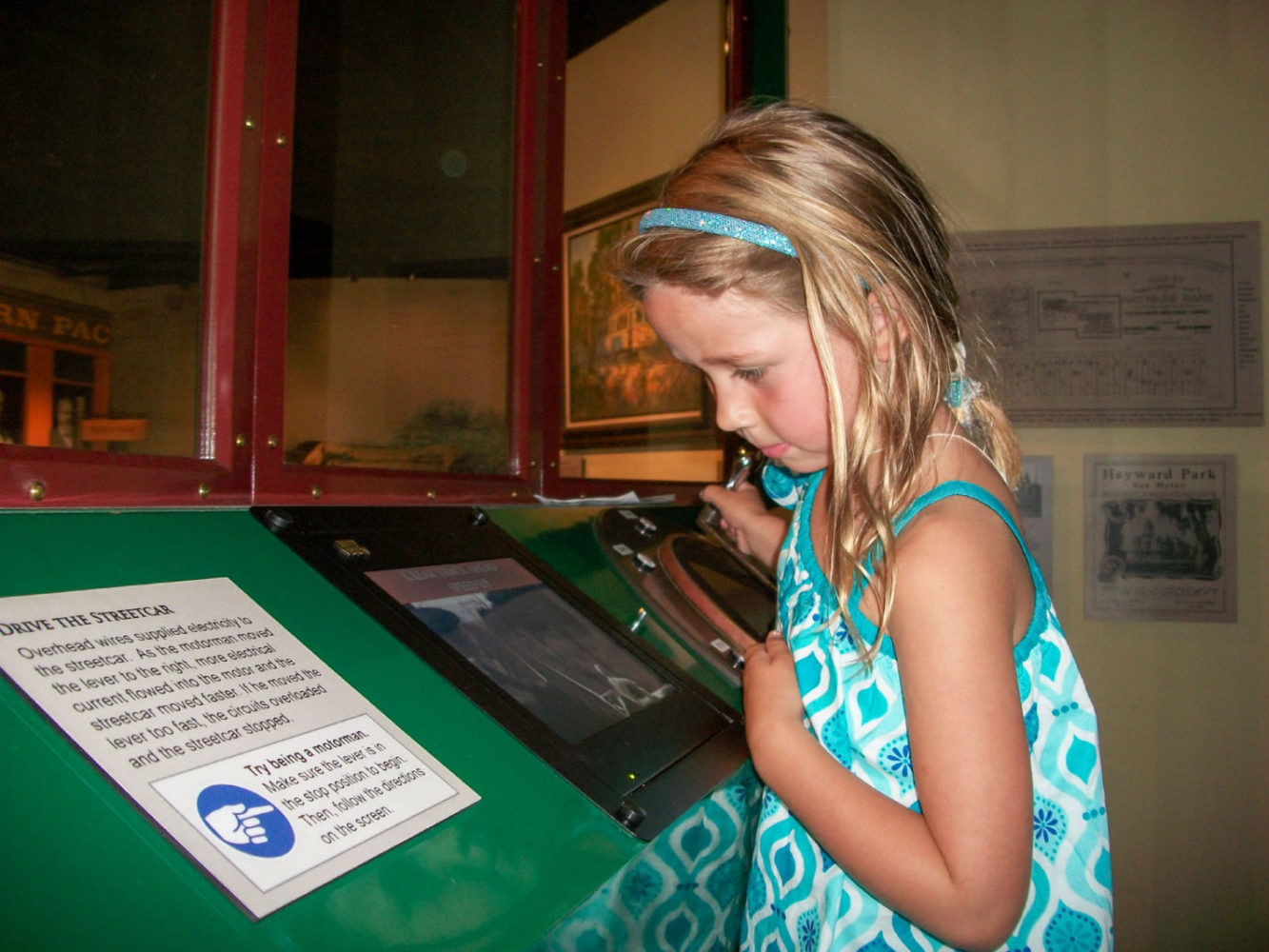
Streetcar Provides Rails for All

The streetcar allowed for middle-class commuters in north county.
With the mechanization and expansion of streetcar companies, the middle classes could start commuting between the Peninsula and San Francisco. Compared to the railroad, the streetcar had more stops, lower fares and an extended schedule. By 1903, the streetcar reached San Mateo where it terminated.
Automobiles Expand the Commute

New roads were built for automobiles.
After 1912, growth in San Mateo County was shaped by the automobile. New roads were built across the county and along the Coast. Highways and freeways opened the county to suburban development and a commuter culture based on the automobile.
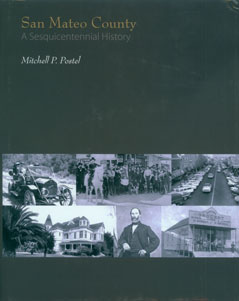
Public Transportation Provides Options
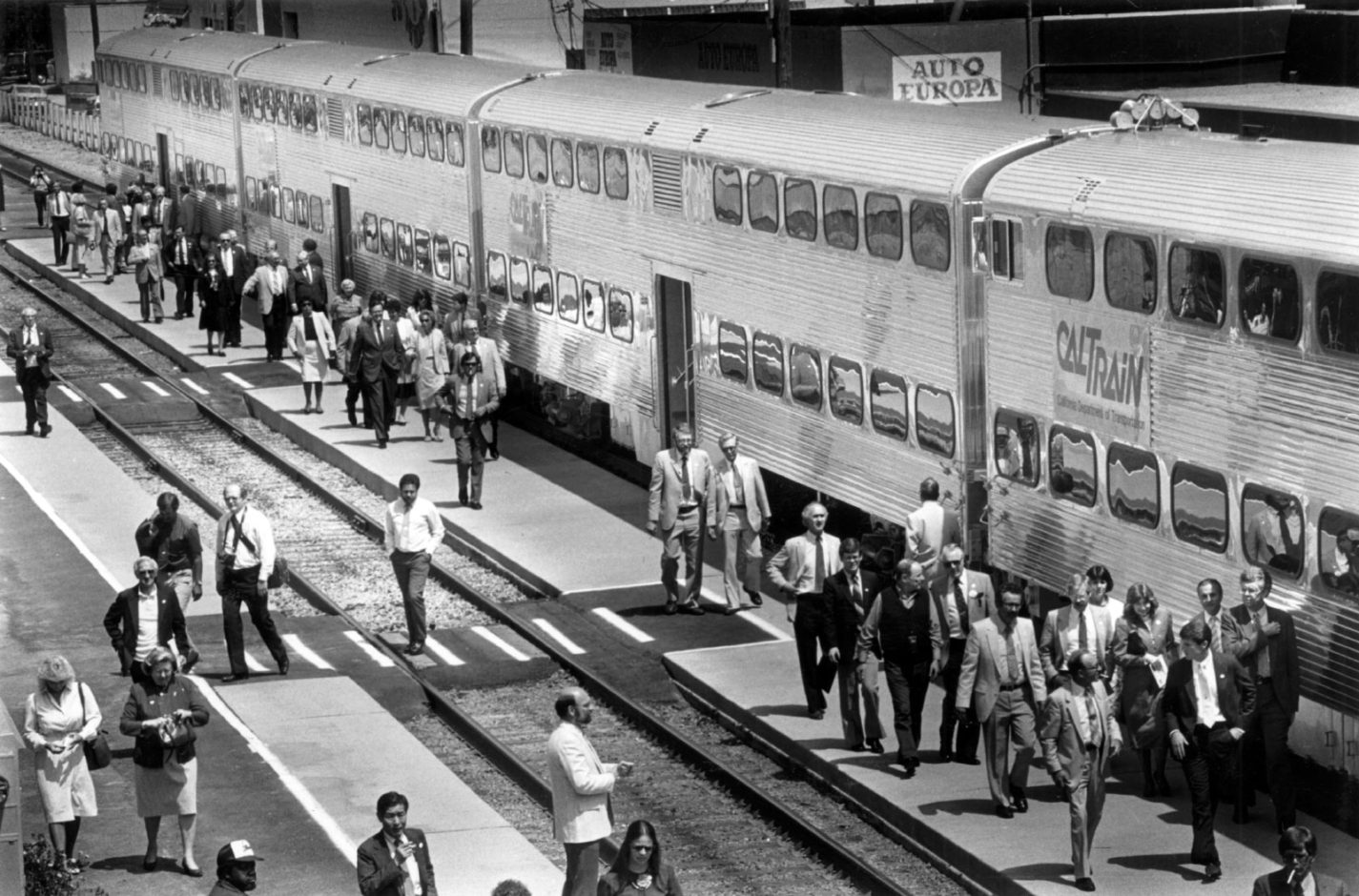
Caltrain commuters in San Mateo, 1985. Photo by Sam Forencich.
As the population of San Mateo County multiplied during the mid-1900s, roads became more congested. In the 1970s and 1980s, Bay Area Rapid Transit (BART), San Mateo County Transit District (SamTrans) and Caltrain started providing public transportation options on the Peninsula.
History Museum Quiz
Take our quiz and test your knowledge on Journey to Work.

